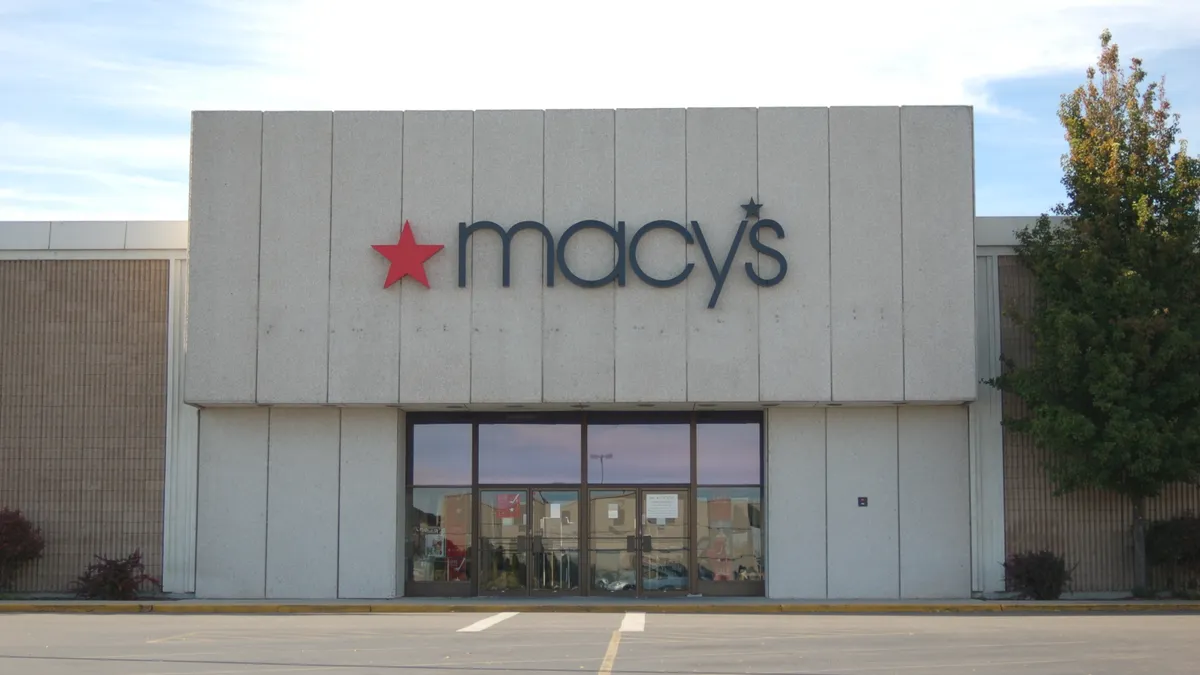Dive Brief:
- An email reactivation campaign during the fourth quarter of 2017 resulted in a 6% increase in active email subscribers for Macy’s, according to Stephanie Lau, vice president, retention marketing at Macy’s, as reported by Digital Commerce 360.
- By optimizing the send time of its email campaigns, the retailer also increased the open rate of unique users by 9% and the click-through rate of unique users by 14%, Lau said at Oracle’s Modern Customer Experience conference this month.
- As a result, Macy’s boosted the size and effectiveness of its email marketing and saw online sales rise 11% in the quarter. Comparable store sales increased over 1%, after 11 consecutive quarters of declines.
Dive Insight:
Macy’s continues to refine its email campaigns and is seeing results strong enough to contribute to the reversal of years of comparable-store sales declines. It's also proving that email doesn’t have to be a tagalong in the e-commerce game.
The secret is nothing more complicated than urging customers to engage more actively with their electronic mailboxes. As retailers expand with more sophisticated marketing techniques, Macy’s lesson is that sometimes going back to basics works, and even more so for mobile commerce. More than half of all email messages are read on mobile devices. But these basics will involve considerable data mining.
Macy’s went with a two-pronged email strategy. One was a deep reactivation of consumers who had not recently opened or clicked on an email, Lau said. In looking at these unengaged shoppers, the retailer put them in five segments based on inactivity. For example, those who had not opened an email in 13 or more months, those who had not opened or clicked on an email in seven to 12 months, shoppers who had purchased from Macys.com but had never interacted with a promotional email, and those who had opted into an email program but had not yet engaged.
The emails sent in the campaign were more focused on engaging the consumer than on selling, said Heather Goff, director of deliverability strategy with Oracle, according to the Digital Commerce 360 report. The messages read "Are you there?" and "It’s been awhile, let’s keep in touch," prompting consumers to confirm their email addresses. A follow-up email was sent to non-responders saying "We miss you" and again, "Are you there?" A third email sent to those who did not answer the first two said, "Come back!" The subject lines used messages like, "Please verify today" and "Confirmation requested," as transactional emails have a higher open rate.
"It definitely looks like an ex who wants to talk to you, but it works," Lau said. The campaign lasted three or four days and 27% of consumers reacted by confirming their email addresses.
The second prong of the strategy was to optimize the time of email sending. Macy’s had previously sent its email promotional messages between 5 a.m. and 7 a.m. But for this campaign, the retailer looked at the average time in the past six months when a consumer opened and clicked on a Macy’s email, and sent the email in the new promotion at that time. That increased the unique open rate by 9% and unique click-through rate by 14%, Digital Commerce 360 reported.
In its campaigns, Macy’s maintained an inbox rate of 98%, with only 2% of emails going junk or spam folders. Goff noted that this is important because retailer emails may be classified as junk by a non-active customer.












